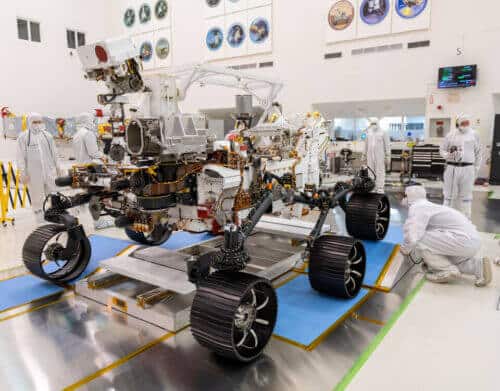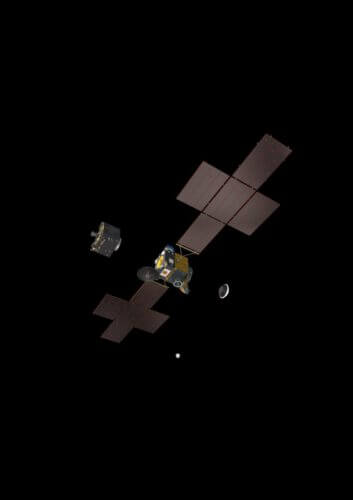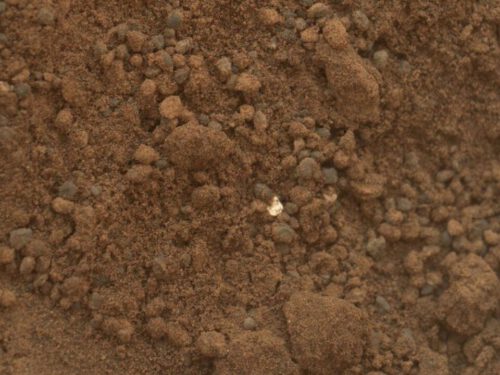If you could bring something from Mars back to Israel, what would you choose? That question is becoming a reality, as the European Space Agency (ESA) is launching a call for scientists to join a NASA team working to determine which Martian samples should be collected and stored aboard the Persvirance rover, which is scheduled for launch this summer.

Perseverance is an independent mission to search for signs of habitable conditions on our neighboring planet, but it is also part of the international operation "Mars sample return" that ESA member states agreed to fund last year during Space19+.
There is no precedent for a flight of more than 53 million km to Mars, landing, collecting samples and launching a space vehicle back to Earth. This operation will last a decade and will involve four launches - three from Earth and the first launch from another planet.

interstellar geo-landing
When Perseverance lands on Mars it will explore the area for more than a year. One of his main tasks will be to collect samples in cigar-sized metal cylinders that will be left on the ground for later collection. As part of this international collaboration, ESA intends to provide a sophisticated sample collection vehicle to be operated during NASA's sample retrieval lander mission in the middle of this decade.
ESA's rover will collect the samples collected by the Persvirens rover and bring them to the lander, where they will be carefully stored in a Mars rover. The climbing vehicle will launch all the samples from the face of Mars and put it in orbit around Mars.
Another important contribution of ESA will be the largest and most powerful space vehicle that will fly to Mars - the return to Israel capsule that will meet the sample and bring it to Israel.

to pack for return to Israel
Although the entire operation is in its early project phase, scientific experts need to be selected now so that they can begin training and working alongside the Perspirans scientific team to increase the value of the samples that will be collected. The selected scientists will also have to anticipate the needs of future researchers who will analyze these samples in a very wide range of studies on Earth.
"We encourage applications from experts outside the field of space," says interim scientist of the Mars sample return program at ESA Dr. Gerhard Kaminck. "We need a field geologist and laboratory experts who know how to choose the right sample based on information from the instruments that are in Prosperance."
The head of the ESA manned flight team adds: "The experts selected through this call will be trained to be part of the international team of remote geologists of Mars. These are exciting times and we look forward to receiving the best offers that Europe can offer."
Mars Express view of Terra Sabaea and Arabia Terra

The study of the samples from Mars on Earth will allow scientists to use devices more powerful than anything that can be flown in robotic missions. The opportunity to learn and share resources, including sending samples to the best laboratories around the world, offers excellent opportunities for new discoveries.
It will be possible to study the samples again and again, and allow the extraction of new information - as with moon samples that were brought to Israel in the sixties and seventies, and continue to reveal new discoveries to this day.
Gerhard concludes: "There are many reasons to explore Mars, but one of the most pressing is that while life arose and evolved on Earth, we still don't know if life had a chance on Mars. Planetary scientists can study rocks, sediments and soil and look for clues to discover the history of the geology and possibly the biology of Mars. So, by comparing these findings with Earth we will also learn more about our planet."
For information on the European Space Agency website
More of the topic in Hayadan:

3 תגובות
This is only about one vehicle, which will be launched in 2020 and collect samples (among its other very important tasks). If they are equal enough* then another mission will pick them up and launch them into orbit around Mars, and a third mission will pick them up from orbit around Mars and return them to Earth.
Of course, once such samples arrive on Earth, it will be possible to test them with the most sophisticated devices that will be available to humanity at the time, and to continue to test them as newer test devices continue to be developed and as the need for new tests to test new hypotheses regarding Mars arises.
* Worth enough: more than a billion US dollars, from the money of the American or European taxpayer, in a very careful estimation, to finance the two additional expeditions to return the samples.
I did not understand.
I understood that there is a vehicle to Mars called Preservation that will be launched in 2020 (within a few months), there is also something called Persvirance (perhaps a wrong spelling for the same vehicle, maybe a separate vehicle). Three launches from Israel and one launch from Mars. But I didn't recognize who was doing what. Also, I did not find in 'Hidan' previous mentions of 'Preservation' or the other name. I would appreciate clarification.
At such an early stage, and even more so when the corona epidemic is raging in the background, about which nothing is known, nor about our future in the future because of this epidemic - it is forbidden to bring anything from another planet. When we reach a good enough level, we will send a fine robotic laboratory that can do all the tests on the surface of the planet without endangering the Earth.